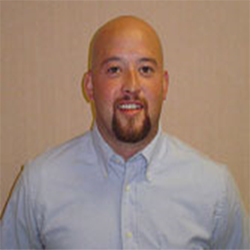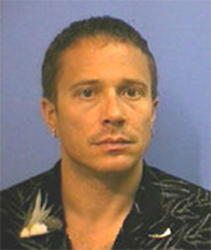Michigan OSHA Safety Consultant Finds a Silent Killer in His Home
Company: Michigan Occupational Safety and Health Administration (MIOSHA)
Location: , Michigan
On Wednesday, January 8, 2014, Phu Nguyen awoke to a beep, beep, beep ... beep, beep, beep ... This was not his alarm clock. This was not even a smoke detector, Nguyen realized, because the smoke detectors in the Nguyen home were hard-wired; when one goes off, they all go off to create one big cacophony of concern. As an On-site Construction Safety Consultant employed with the Michigan Occupational Safety & Health Administration (MIOSHA); Consultation, Education, and Training (CET) Division, Nguyen works with employers who request consultation visits to identify workplace hazards, provide advice on compliance with OSHA standards, and assist in establishing injury and illness prevention programs.
Primarily targeted for small- and mid-sized businesses, OSHA's free, confidential, and voluntary On-site Consultation Program is available in all states across the country and several U.S. territories, with priority given to employers in high-hazard industries or involved in hazardous operations. On-site Consultation services are separate from enforcement and do not result in penalties or citations. In FY 2013, responding to requests from small employers looking to create or improve their injury and illness prevention programs, OSHA's On-site Consultation Program conducted nearly 30,000 visits to small business worksites, covering over 1.5 million workers across the nation.
Pho rushed through the house, and found the source of this unwelcome noise on top of his son's bookshelf: a carbon monoxide (CO) detector, which he had placed there 2 previously, hoping to never actually need it.
After turning the fans on and opening the windows to a brisk -4°, Nguyen decided it was best for his son, pregnant wife, and himself get out of the house. It was later determined that the there was a problem with the oil furnace and, if it weren't for the CO Detector, the Nguyens would have never known about the rising CO levels. Carbon monoxide (PDF) is a colorless, odorless, and tasteless poisonous gas, and the Nguyens would have continued to run that furnace in the same condition all winter long.
"I was fortunate in that we had a detector with a digital readout of the parts per million (ppm) levels. When I first found it, the level was 158. As I moved through the house, it went up and down, but in the basement, it climbed up to 300+."
When Nguyen went into the office, he asked Greg Kozak, Senior Industrial Hygienist, at what levels I should start to get concerned. His answer: 35.
That's right, 35 ppm, which is the MIOSHA General Industry, 8-hour, time-weighted average limit. Federal OSHA's permissible exposure limit is 50 ppm. The ceiling or never-to-be-exceeded limit for CO is 200 ppm.
Kozak also mentioned there are studies that show chronic CO exposure to even low levels can cause long-term health problems. Certain groups — unborn babies, infants, and people with chronic heart disease, anemia, or respiratory problems — are more susceptible to its effects. Annually, more than 400 Americans die from unintentional CO poisoning, more than 20,000 visit the emergency room, and more than 4,000 are hospitalized due to CO poisoning. Fatality is highest among people 65 and older. Every year, workers die from carbon monoxide poisoning, usually while using fuel-burning equipment and tools in buildings or semi-enclosed spaces without adequate ventilation. This can be especially true during the winter months when employees use this type of equipment in indoor spaces that have been sealed tightly to block out cold temperatures and wind. Symptoms of carbon monoxide exposure can include everything from headaches, dizziness, and drowsiness to nausea, vomiting, or tightness across the chest. Severe carbon monoxide poisoning can cause neurological damage, coma, and death.
Carbon monoxide is found in combustion fumes, such as those produced by vehicle exhausts, fuel burning furnaces, coal burning power plants, small gasoline engines, portable gasoline-powered generators, power washers, fire places, charcoal grills, marine engines, forklifts, propane-powered heaters, gas water heaters, and kerosene heaters.
"My basement was 10 times the 8-hour, time-weighted average limit," said Nguyen. His advice to others is, "Please make sure you have good working carbon monoxide detectors in addition to your smoke alarms." Also, "To reduce the risk of carbon monoxide poisoning in the workplace, employers should install an effective ventilation system, avoid the use of fuel-burning equipment in enclosed or partially-enclosed spaces, use carbon monoxide detectors in areas where the hazard is a concern, and take other precautions outlined in OSHA's Carbon Monoxide Fact Sheet (PDF*)." For more information on carbon monoxide poisoning and preventing exposure, see OSHA's Carbon Monoxide Poisoning Quick Cards (in English and Spanish) (PDF).
Stay in contact with us: For further information on workplace safety and health issues, contact the OSHA area office nearest you. Click here to find OSHA and State Plan Offices.

Onsite Construction Safety Consultant, MIOSHA/CET

Senior Industrial Hygienist MIOSHA/CET
**eBooks - EPUB is the most common format for e-Books. If you use a Sony Reader, a Nook, or an iPad you can download the EPUB file format. If you use a Kindle, you can download the MOBI file format.


